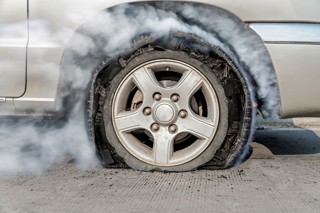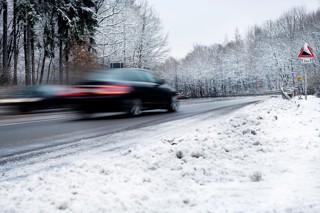Pollution from tyre wear can be 1,000 times worse than what comes out of a car’s exhaust, according to a new study by Emissions Analytics.
Harmful particle matter from tyres – and also brakes – is being exacerbated by the increasing popularity of large, heavy vehicles such as SUVs, and growing demand for electric vehicles, which are heavier than standard cars because of their batteries.
Exhaust emissions have been rapidly reduced by car makers as a result of the pressure placed on them by European emissions standards. New cars now emit very little in the way of particulate matter but there is growing concern around ‘non-exhaust emissions’.
Non-exhaust emissions (NEE) are particles released into the air from brake wear, tyre wear, road surface wear and resuspension of road dust during on-road vehicle usage. No legislation is in place to limit or reduce NEE, but they cause a great deal of concern for air quality.
Richard Lofthouse, senior researcher at Emissions Analytics, said: “It’s time to consider not just what comes out of a car’s exhaust pipe but particle pollution from tyre and brake wear. Our initial tests reveal that there can be a shocking amount of particle pollution from tyres – 1,000 times worse than emissions from a car’s exhaust.
“What is even more frightening is that while exhaust emissions have been tightly regulated for many years, tyre wear is totally unregulated – and with the increasing growth in sales of heavier SUVs and battery-powered electric cars, non-exhaust emissions are a very serious problem.”
NEEs are currently believed to constitute the majority of primary particulate matter from road transport, 60% percent of PM2.5 and 73% percent of PM10 – and in its 2019 report ‘Non-Exhaust Emissions from Road Traffic’ by the UK Government’s Air Quality Expert Group (AQEG), it recommended that NEE are immediately recognised as a source of ambient concentrations of airborne particulate matter, even for vehicles with zero exhaust emissions of particles – such as EVs.
To understand the scale of the problem, Emissions Analytics performed some initial tyre wear testing. Using a popular family hatchback running on brand new, correctly inflated tyres, it found that the car emitted 5.8g/km of particles.
Compared with regulated exhaust emission limits of 4.5mg/km, the tyre wear emission is higher by a factor of more than 1,000.
Emissions Analytics notes that this could be even higher if the vehicle had tyres which were underinflated, or the road surfaces used for the test were rougher, or the tyres used were from a budget range – all very recognisable scenarios in ‘real world’ motoring.
Nick Molden, CEO of Emissions Analytics, said: “The challenge to the industry and regulators is an almost complete black hole of consumer information, undone by frankly out of date regulations still preoccupied with exhaust emissions. In the short term, fitting higher quality tyres is one way to reduce these NEEs and to always have tyres inflated to the correct level.
“Ultimately, though, the car industry may have to find ways to reduce vehicle weight too. What is without doubt on the horizon is much-needed regulation to combat this problem. Whether that leads to specific types of low emission, harder wearing tyres is not for us to say – but change has to come.”
Mike Hawes, SMMT chief executive responded to the findings: “Making sensationalist claims based on testing of a single vehicle is not credible and, quite frankly, irresponsible. Emissions from safety-critical brakes, tyres and road surfaces are very difficult to measure, and a challenge already taken seriously by the sector, governments and a UN global group, which are working together to better understand, and agree, how to test them in a scientific way. Further, there is no evidence to suggest that electric vehicles have a propensity to emit more non-exhaust particulates than any other – in fact, their regenerative braking systems mean wear is significantly reduced.”





















Paul Adey - 06/03/2020 14:12
Well, well well, NEE emissions now, so electric vehicles may not be cleaner after all. It is typical of the authorities, they get onto one particular course of thinking and they close their minds to everything else. Contrary to what they would have you believe, the modern diesel car is not a major polluter but is the easiest to attack.